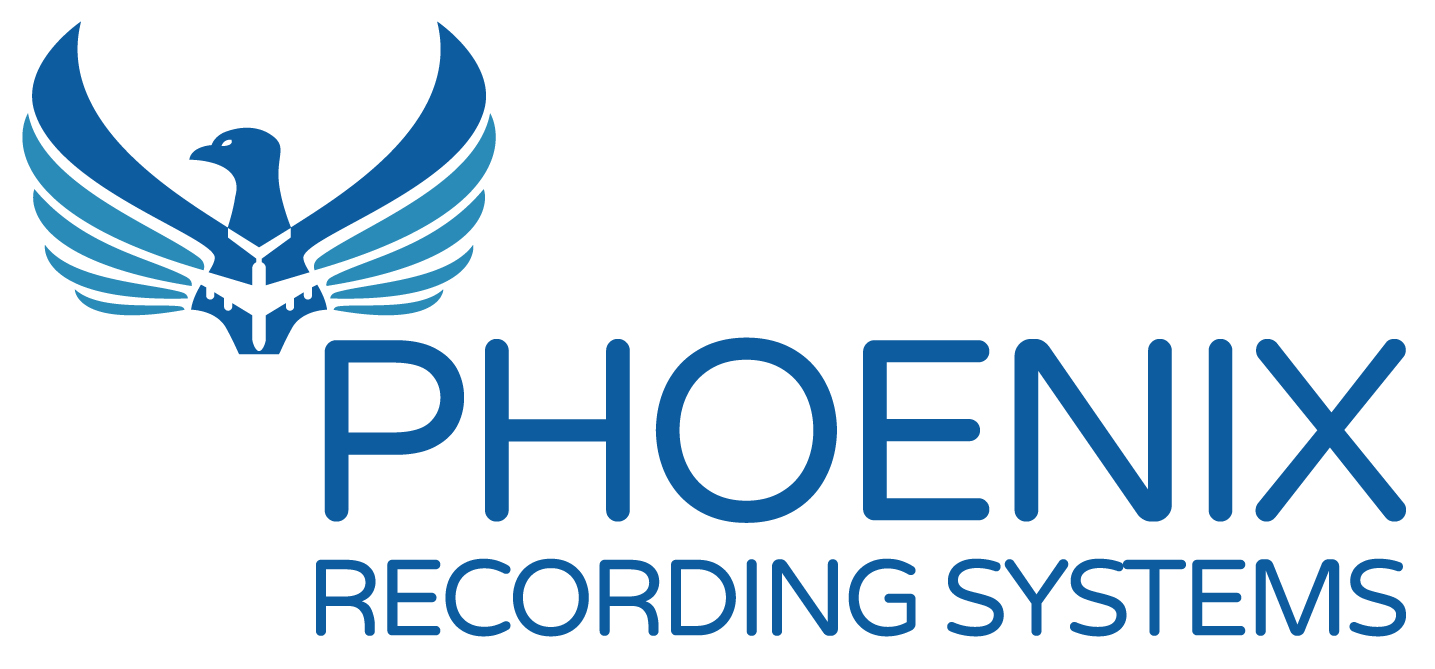Phoenix Recording Systems
Air Traffic Control (ATC) Voice & Data Recording Solutions
Veristore Record and Replay System – The Voice, Data and Screen Recording Solution for Air Traffic Control (ATC)
Phoenix Recording Systems is a subsidiary of PALSupport (UK) and an industry leader in the manufacture of Recording Solutions for Air Traffic Control (ATC). Designed specifically for ATC, a Veristore Record and Replay System records and synchronously replays voice signals, ambient microphones, raw radar data, controller screen information and CCTV camera signals. Every system is fully compliant with the latest ICAO standards, is modular in concept and easy to expand or upgrade when dictated by operational requirements or regulations.
The underlying philosophy behind a Veristore Record and Replay System is that each data source is directly interfaced to the recorder that will be used to store the data. This not only guarantees the security of the recorded data by avoiding the need to transfer it from one storage location to another with multiple write and read operations but also allows the optimum technology to be used for acquiring and recording each type of data.
In an ATC environment the prime requirement for a recording system is to be able to quickly, easily and accurately reconstruct a situation exactly as it occurred. This may be a few seconds after the recording was made, when a controller or supervisor wishes to listen to a message or conversation that was not clear, or it may be sometime in the future when an investigator needs to try and determine why a decision had been made. The Veristore Record and Replay System utilises the latest available technologies which enable fast access to all of the recorded data.
The Veristore Software is a comprehensive package, which includes all of the monitoring and replay features in one easy to use application. There are no additional modules or hidden extra costs necessary to produce a fully compliant record and replay system.
The first Veristore Record and Replay System was installed in 2007 and there are now in excess of forty installations at major international airports, national and local airports, heliports and mobile sites.
Veristore Record and Replay Systems have been proven to be reliable with a low cost of ownership and are backed by Phoenix Recording Systems’ guarantee to support their equipment for longer than anyone else in the marketplace.
Company Profile
-
Veristore Recorders for ATC
All Veristore Recorders have the following features:
- The User has no access to the record process, which is totally independent of the Veristore Software used to access the recorded data.
- Data is written directly to the recorder internal store. Once written, it is totally secure and cannot be altered, corrupted, over-written or deleted during the regulatory retention period.
- A read-after-write check is performed immediately after the data is written to disk and an alarm is raised if an error is identified.
- True 100% redundancy is achieved by using two totally independent recorders in parallel. These recorders do not communicate with each other and hence no data can ever be lost due to switchover between ‘master’ and ‘stand-by’ equipment. This results in two totally independent, complete and accurate, copies of the recorded data which means that there is usually no legal requirement to archive the data.
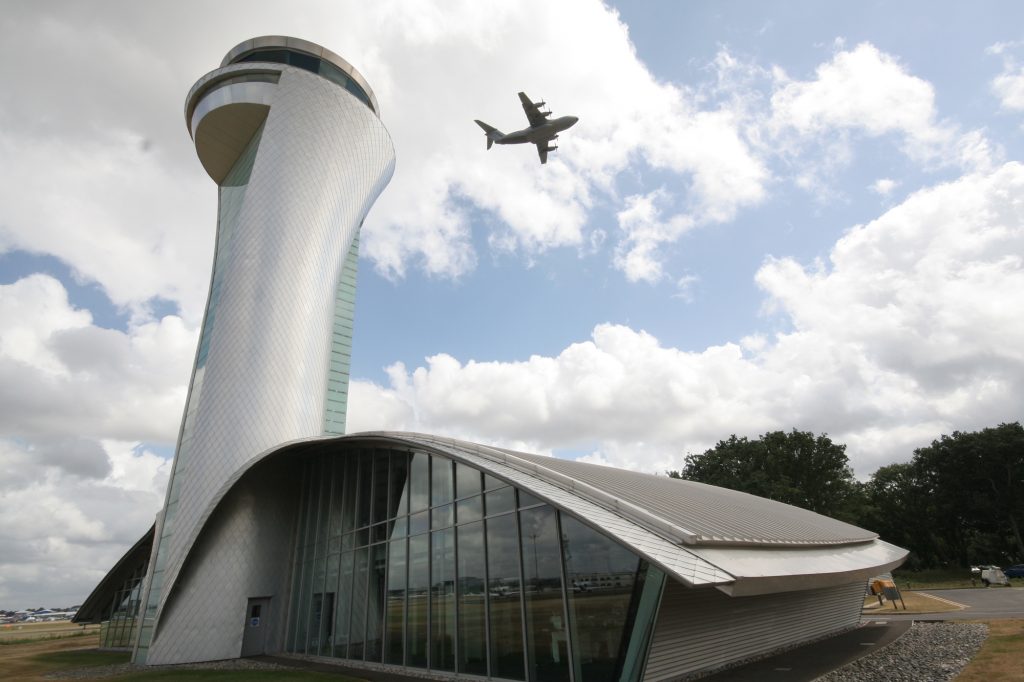
-
Veristore Voice Recorders
Veristore Voice Recorders utilise COTS Linux server technology and have interfaces for many data technologies and formats, whether analogue, digital or VoIP.
- Data is recorded continuously 24/7, without the use of either VOX or AGC, which guarantees that all of the information is captured and can be replayed exactly as the Controller heard it.
- Ambient Microphones may be recorded alongside the communications information and are password protected during replay.
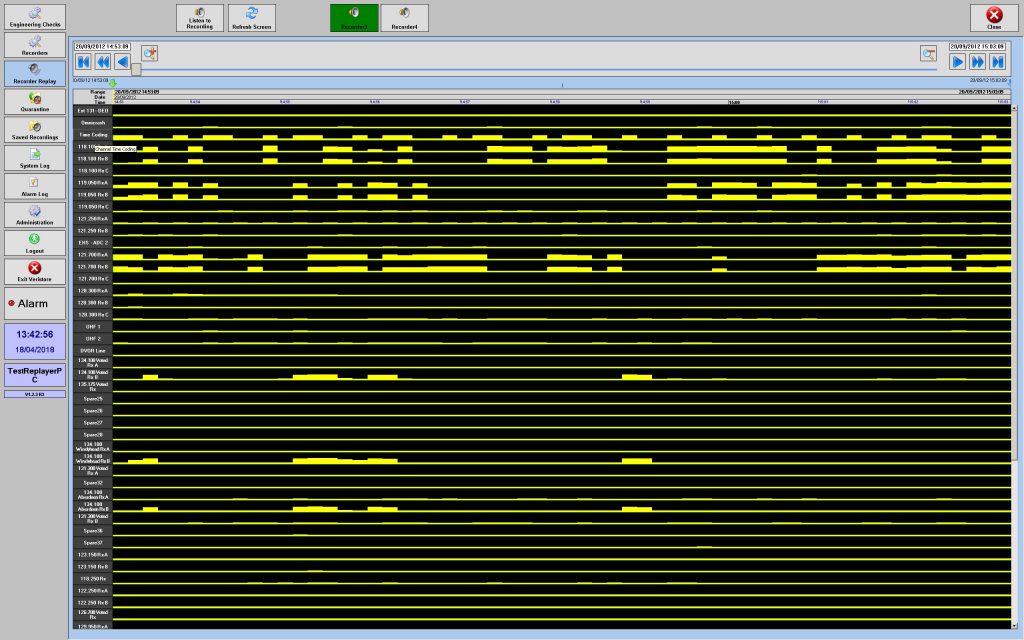
-
Veristore Radar Recorders
The ICAO SARPS state that both Through-the-Wall (TTW) Radar and At-the-Glass (ATG) Radar are to be recorded and replayed synchronously with the Voice Data.
- TTW Radar is raw, pre-processed, radar data and is recorded at the point where the radar signal ‘enters the building’. It is transmitted as either a serial data stream, e.g. RS 232 or RS 422, or in IP Format. Veristore TTW Radar recorders have interfaces for each of these.
- ATG Radar records the Controller Display by capturing the screen drive signal. A Splitter, which has no affect on the Display Drive Signal and does not degrade the information displayed on the Controller Screen, is introduced as close as possible to the Controller Screen. A Frame Grabber then captures individual frames from the video data stream and transmits them to the Veristore Screen Recorder which has interfaces for virtually every type and resolution of screen from Analogue RGB to DisplayPort.
Phoenix Recording Systems recommends that a nominal Frame Capture Rate of 3fps, which enables mouse movements, manipulation of the displayed data and the opening and closing of any windows to be faithfully captured, is used for ATC applications.
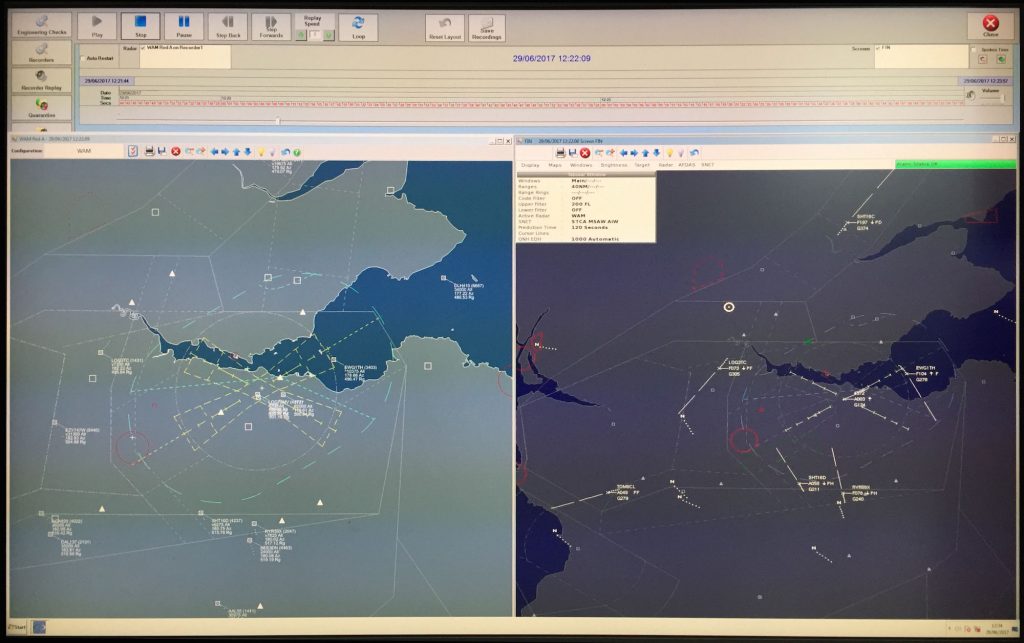
-
Veristore CCTV Recorders
The Veristore CCTV Recorder has the same architecture as the Veristore Screen Recorder with interfaces for most cameras including AHD and HD IP.
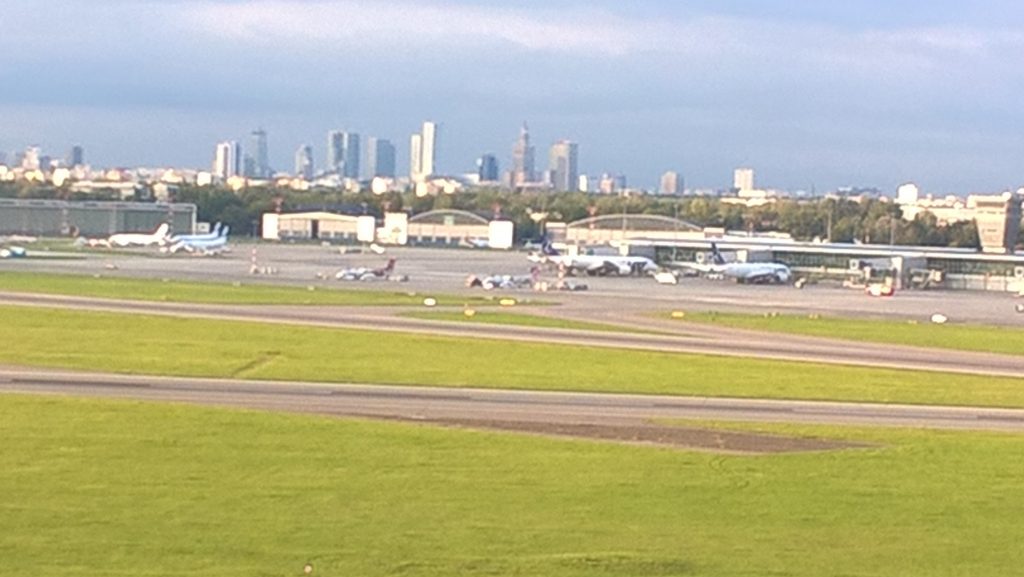
-
Veristore Replay for ATC
Any of the recorded data can be immediately replayed at either the Central Management System or a Remote Replayer.
Initially the data to be replayed has to be identified and located. This is a straightforward operation which is achieved by simply entering the approximate start and finish times of the period of interest and the channels to be replayed. Once selected, data may be replayed with all of the audio channels and the data from all of the other sources, in perfect synchronism. The quality and the level of the replayed voice signals will exactly replicate the quality and level of the signals when they were received, including any background noise. This enables an accurate reconstruction of any incident to be produced, which is essential for any investigation.
- TTW Radar Data is displayed on local area maps. If desired the replayed radar display can then be directly compared with the information displayed on the Controller Screen at the time of recording. This will confirm whether or not the Controller was able to see all of the salient details at the time of an incident and that nothing had been masked or hidden from view.
- When the ATG Radar Data is replayed the Controller Screens are displayed exactly as they were captured. Mouse movements, the opening, closing and scaling of windows and any manipulation of the display initiated by the Controller are replayed exactly as they occurred.
- Recorded data needed for an investigation may be impounded by the relevant regulatory body. When this happens, the appropriate data will be copied to a ‘Quarantine Storage’ location, which is a separate, secure storage area.
- Any Quarantine Data must be exactly as it was originally recorded and may not be replayed, copied deleted or over-written until official authority is given for the release of such data. Quarantine (Impound) Files are complete, accurate and verifiable.
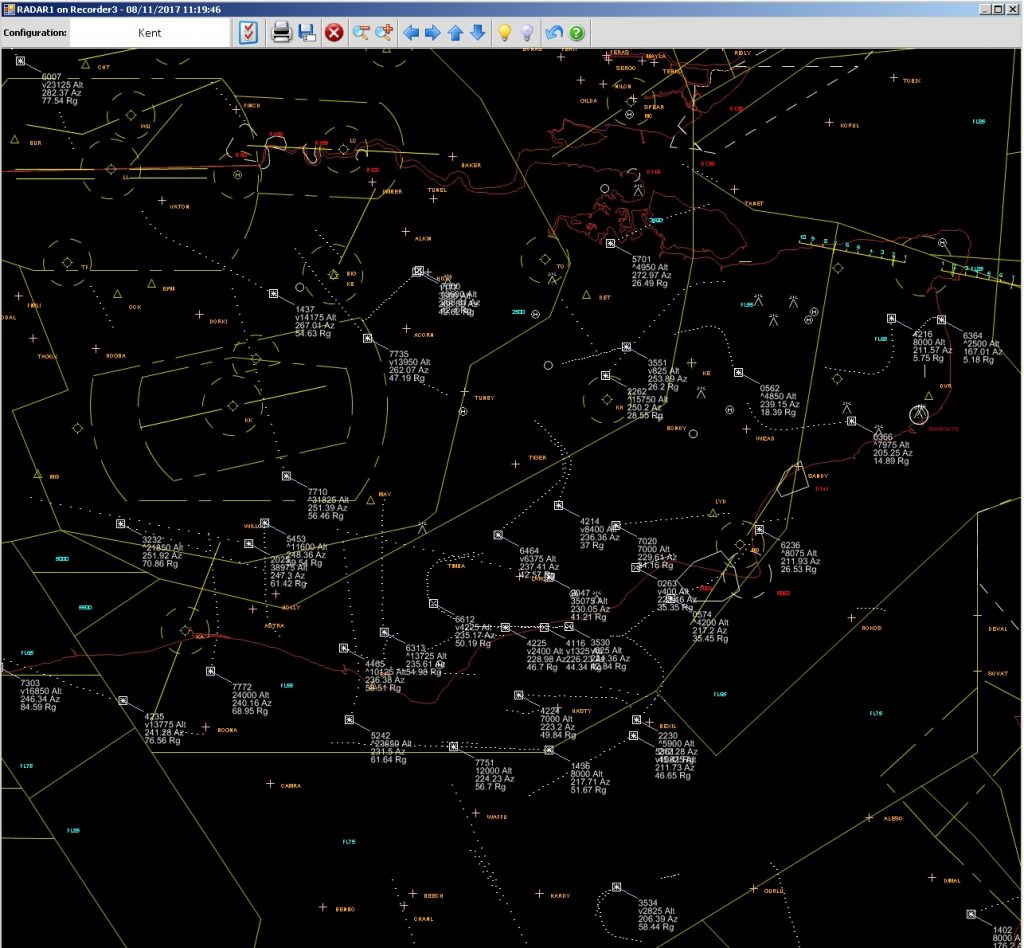
-
Veristore Central Management System (CMS)
The Central Management System (CMS) is the hub of a Veristore Record and Replay System, communicating with all of the recorders via the Veristore Ethernet Network.
- A straightforward, intuitive, Graphical User Interface enables the User to quickly and efficiently access the recorded data and the status of the recorders.
- A comprehensive overview of the current status of all of the recorders and the status of each Channel is readily available with the information clearly displayed on a single screen.
- All of the functions that are available at the individual recorders are also available at the CMS.
- All of the recorded data can be accessed for Live Monitoring, replay or copying to an alternative storage location.
- The security and integrity of the Record and Replay System is maintained by a hierarchy of User Types and passwords which are the responsibility of the System Administrator.
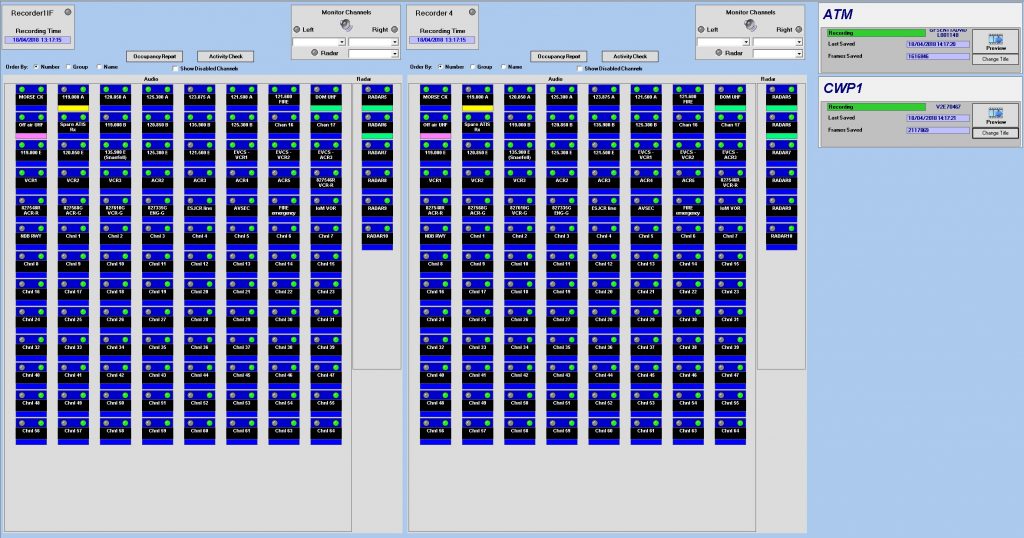
-
Veristore System Alarms
Veristore Record and Replay Systems have a comprehensive alarm structure, which is flexible and may be tailored by the User to their specific requirements.
- Hardware (contact closure) alarm signals are generated by the Recorders if a fault is detected that causes the recorder to stop recording. These signals are independent of the Veristore Software and can be directly connected to a Remote Alarm Panel to indicate that the integrity of the Recording System has been compromised.
- The CMS and Recorders also generate alarm signals, which may be designated as ‘urgent’ or ‘non-urgent’ to indicate that a fault in the Recording System has been identified.
-
Veristore System Log and Alarm Log
Detailed System and Alarm Logs are produced and maintained by each of the Recorders. The CMS interrogates the Recorders and compiles the information into System and Alarm Logs for the Record and Replay System.
- All of the entries in the logs are time-stamped and have the relevant user identification attached. Any access to the recorders is therefore reported by user identification, date and time.
- The Alarm Log provides details of all of the alarms that have been raised, when they were acknowledged, if the fault has been rectified and when they were cleared.
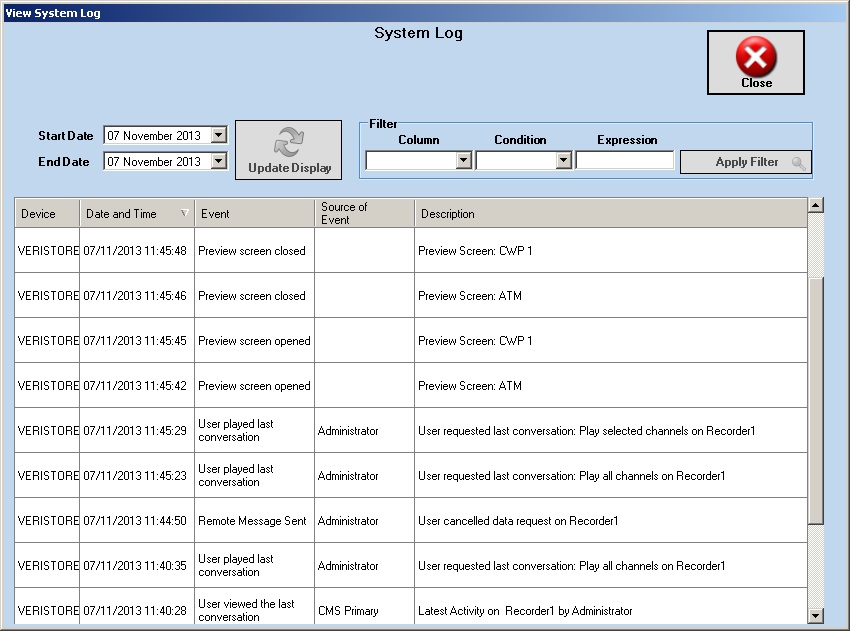
Images
Contact
Unit 2
St Clears Business Park
Tenby Road
St Clears
Carmarthenshire
United Kingdom
SA33 4JW
- +44 1749 870525
